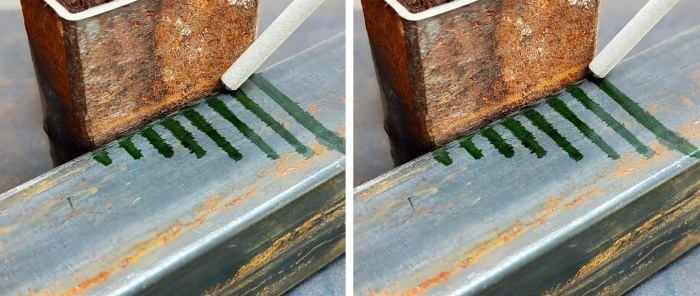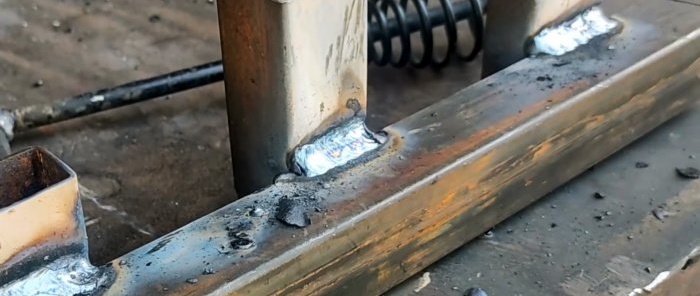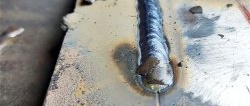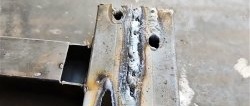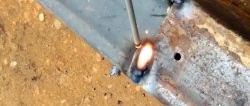It is not so easy for a novice welder to weld thin sheet metal or thin-walled pipes with a conventional welding inverter. The electrode burns through the product, resulting in a sad picture instead of a strong connection with a neat seam. In fact, you can learn how to lay an almost factory-made seam even on thin-walled metal, but this requires the correct guidance of the electrode. Let's look at 3 methods of welding, which are optimal for welding thin sheet steel, pipes, etc.
1. Welding with return
This method of guiding the electrode tip involves a return suture. To do this, the entire length of the welded seam must be mentally divided by marks in increments of 5 mm. The tip of the electrode is ignited first, and quickly moves forward, then returns and lingers. As soon as enough deposited metal has formed in this place, you need to quickly move forward and return to the next mark.
Thus, the electrode does not stay in one place for a long time. The forward shift gives time for the molten metal to solidify.This method makes it possible to apply a thick, high-quality seam that reliably holds the workpieces together.
2. Straight welding
This is the fastest and easiest welding method. It is necessary to ignite the electrode and pass it along the joint of the parts. In this case, the tip should lag behind the holder. If you need a wide seam, you can slightly guide the electrode along a wave-like path, moving it left and right.
To weld this way, it is necessary to adjust the welding current to the current thickness of the steel, and naturally use an electrode of the recommended cross-section. By observing all the conditions and choosing the optimal speed of progress, you will never burn through the metal.
3. Welding with electrode separation
This method is very similar to the previous one. The electrode is carried out in a similar way, but after 0.5-1 cm of the seam it comes off for an instant. It then returns to the break point and welding continues. This pause allows you to prevent critical overheating of the metal, during which it will burn through.
Welding this way will probably be the easiest for a beginner.
It’s just important not to pause too long, because if the seam hardens, the electrode will not develop as easily the next time you touch it.


